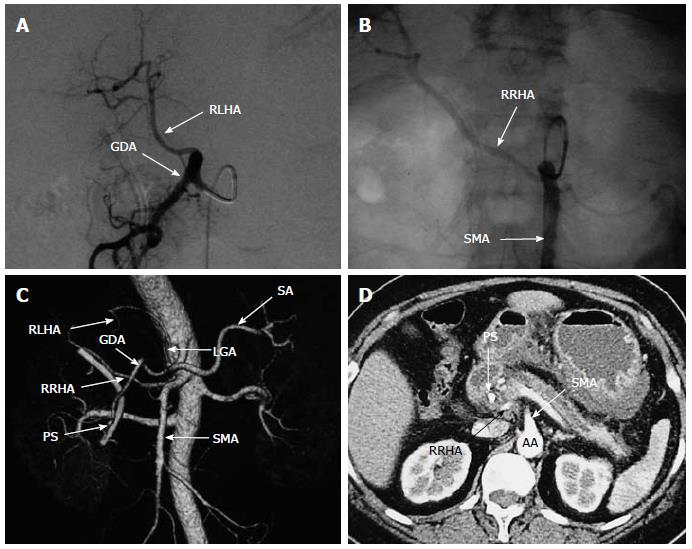Copyright
©The Author(s) 2015.
World J Gastroenterol. Jan 21, 2015; 21(3): 969-976
Published online Jan 21, 2015. doi: 10.3748/wjg.v21.i3.969
Published online Jan 21, 2015. doi: 10.3748/wjg.v21.i3.969
Figure 2 Sixty-year-old woman with replaced right hepatic artery and replaced left hepatic artery.
A: Visceral angiogram with celiac injection demonstrating an RLHA; B: Visceral angiogram with SMA injection revealed an RRHA originating from the proximal SMA; C: Volume-rendered reformatted image depicting Michels type IV; D: MDCT showing an RRHA originating from the SMA traveling behind the portal vein. RRHA: Replaced right hepatic artery; RLHA: Replaced left hepatic artery; SMA: Superior mesenteric artery; SA: Splenic artery; GDA: Gastroduodenal artery; LGA: Left gastric artery; PS: Plastic stent; AA: Abdominal aorta.
- Citation: Yang F, Di Y, Li J, Wang XY, Yao L, Hao SJ, Jiang YJ, Jin C, Fu DL. Accuracy of routine multidetector computed tomography to identify arterial variants in patients scheduled for pancreaticoduodenectomy. World J Gastroenterol 2015; 21(3): 969-976
- URL: https://www.wjgnet.com/1007-9327/full/v21/i3/969.htm
- DOI: https://dx.doi.org/10.3748/wjg.v21.i3.969









